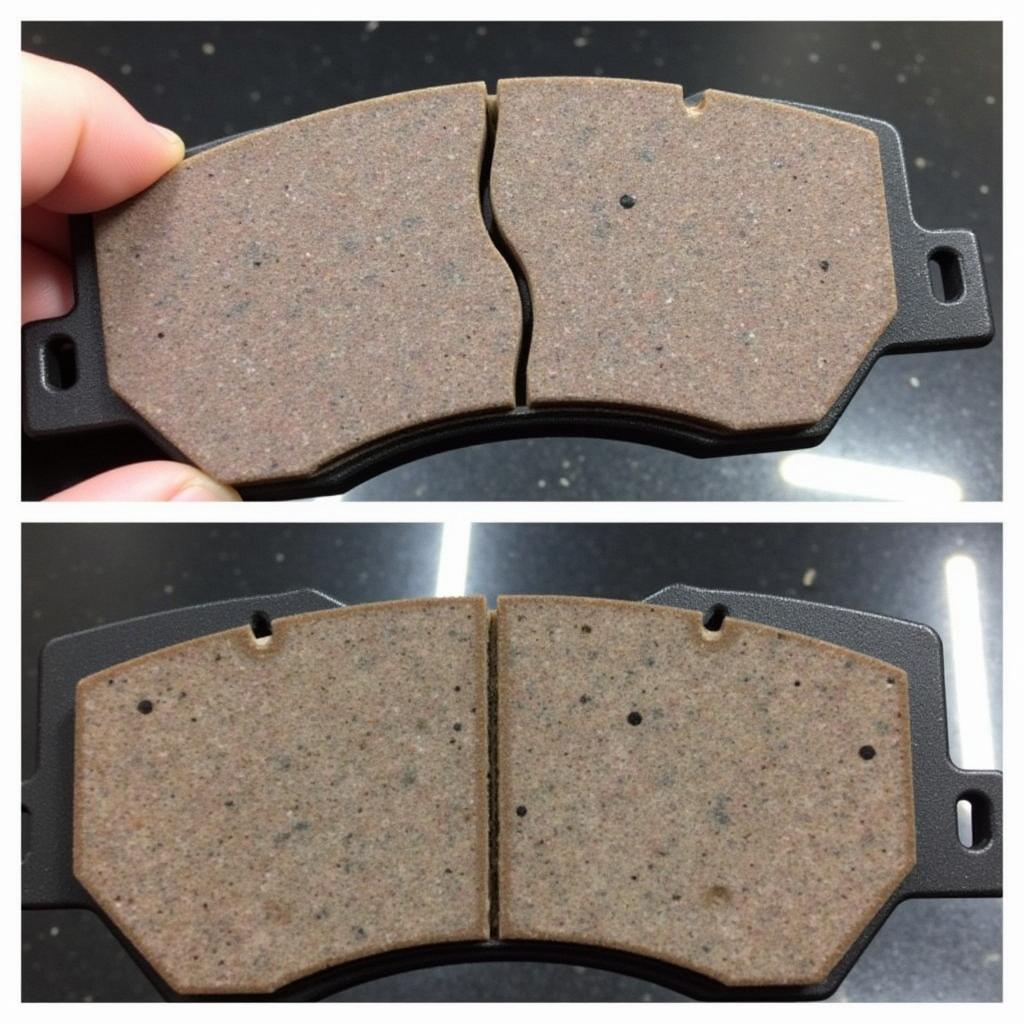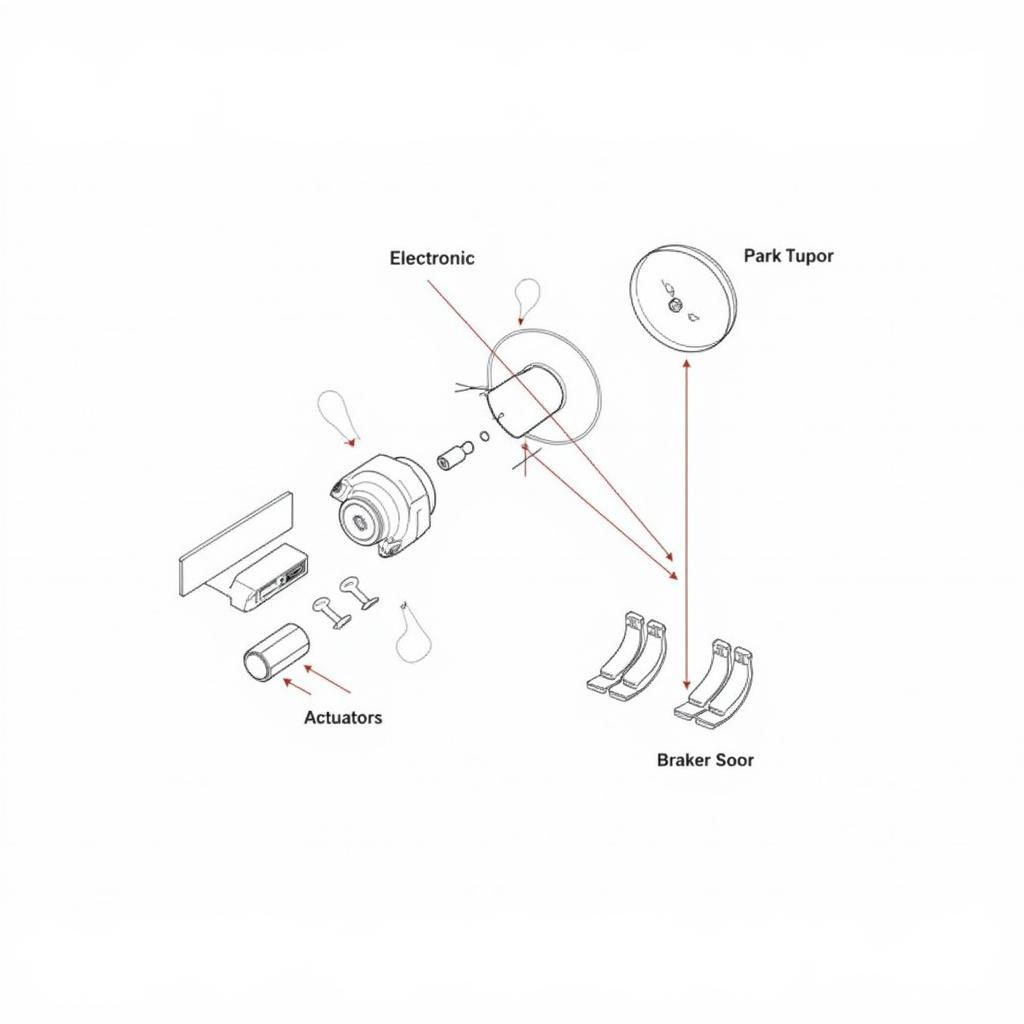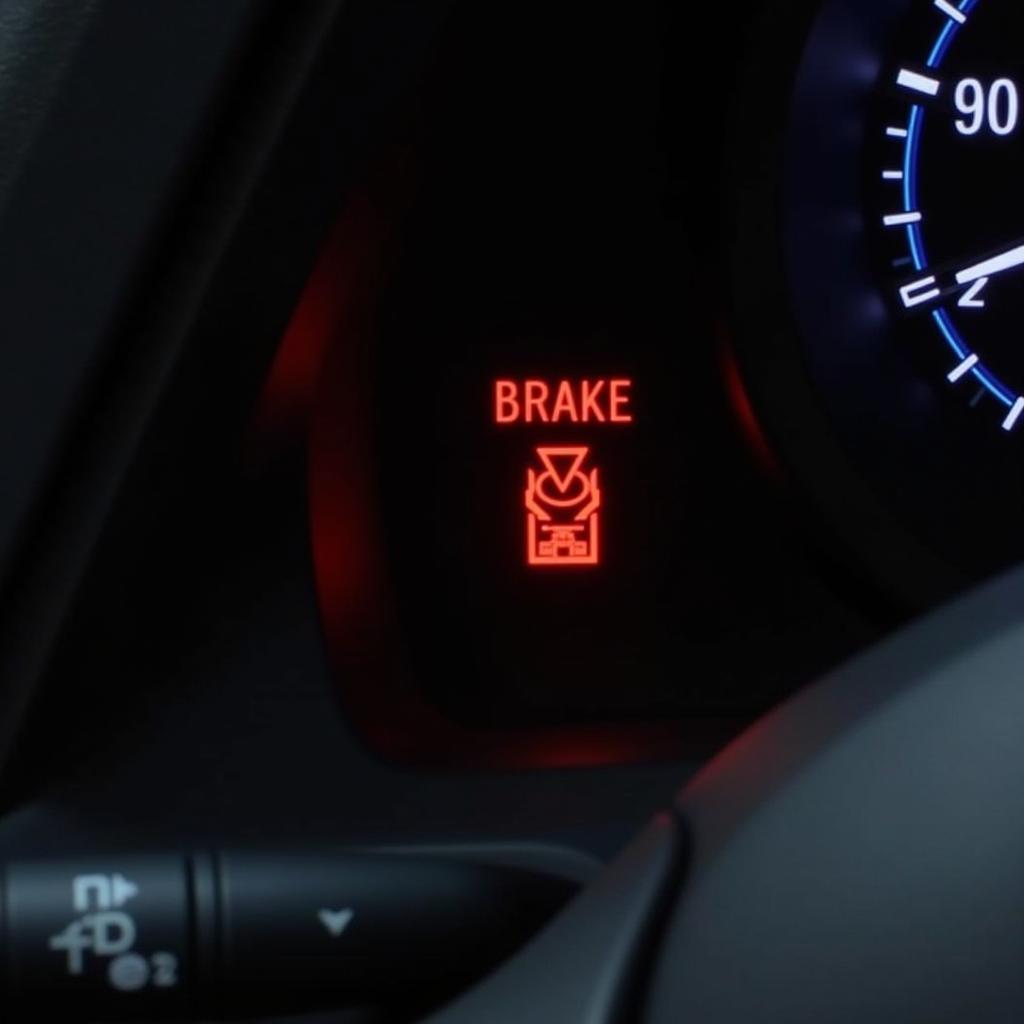The brake warning light on your dashboard is a crucial safety feature, and when it illuminates on your 2011 Mini Cooper, it’s essential not to ignore it. This light indicates a potential issue with your braking system that requires immediate attention.
While the appearance of the brake warning light can be alarming, it doesn’t necessarily signify a catastrophic problem. In this article, we will explore the common causes behind a 2011 Mini Cooper brake warning light and provide potential solutions to help you address the issue effectively.
Common Causes of a 2011 Mini Cooper Brake Warning Light
Understanding the potential reasons behind your brake warning light is the first step in resolving the issue. Here are some of the most common culprits:
1. Low Brake Fluid Level
One of the most prevalent causes of a brake warning light is low brake fluid. Your braking system relies on hydraulic pressure to function correctly, and brake fluid is the lifeblood of this system. Over time, brake pads wear down, and this can lead to a decrease in brake fluid level.
Solution: Check your brake fluid level by locating the brake fluid reservoir under the hood. If the fluid level is below the minimum mark, add the appropriate DOT 3 or DOT 4 brake fluid. However, simply adding fluid might not solve the underlying issue. If you notice a consistent need to top up brake fluid, it’s crucial to have your braking system inspected for leaks or other problems by a qualified mechanic.
 2011 Mini Cooper Low Brake Fluid Reservoir
2011 Mini Cooper Low Brake Fluid Reservoir
2. Worn Brake Pads
Brake pads are designed to wear down over time. When they reach a certain thickness, the brake wear sensors will trigger the warning light on your dashboard.
Solution: If your brake pads are worn, you will need to replace them. It’s best practice to replace all four brake pads simultaneously to ensure even braking performance. If you are comfortable with car maintenance, you can replace brake pads yourself. However, if you are unsure, it’s recommended to consult a professional mechanic.
 Worn Brake Pads on a 2011 Mini Cooper
Worn Brake Pads on a 2011 Mini Cooper
3. Faulty Brake Pad Wear Sensor
While less common, a malfunctioning brake pad wear sensor can also trigger the brake warning light. These sensors are small wires embedded within the brake pads.
Solution: If a faulty sensor is the culprit, it will need to be replaced. This is typically a quick and inexpensive fix that can be done at the same time as brake pad replacement.
4. ABS Issue
The Anti-lock Braking System (ABS) is a crucial safety feature that prevents your wheels from locking up during hard braking. If your 2011 Mini Cooper’s ABS system experiences a malfunction, it can illuminate the brake warning light.
Solution: Diagnosing and repairing ABS issues typically requires specialized diagnostic tools. If you suspect a problem with your ABS, it’s best to consult with a qualified mechanic or take your car to a dealership.
What to Do When the Brake Warning Light Comes On
If your 2011 Mini Cooper’s brake warning light illuminates, here’s a step-by-step guide on how to proceed:
- Pull over safely: Find a safe location to pull over as soon as possible.
- Check your brake fluid: As mentioned earlier, low brake fluid is a common cause.
- Inspect your brake pads: If you feel comfortable doing so, visually inspect your brake pads for excessive wear.
- Avoid driving: If you suspect a serious problem or aren’t comfortable inspecting the vehicle yourself, do not attempt to continue driving.
- Seek professional help: Contact a qualified mechanic or tow your Mini Cooper to a trusted repair shop or dealership.
Preventing Future Brake Warning Light Issues
Prevention is key when it comes to car maintenance. Here are a few tips to help prevent future brake warning light occurrences:
- Regular brake inspections: Schedule routine brake inspections with your mechanic, especially if you frequently drive in city traffic or hilly areas.
- Quality brake pads: Invest in high-quality brake pads that are designed for your Mini Cooper’s make and model.
- Mindful driving habits: Avoid aggressive braking and coast to a stop whenever possible to minimize wear on your brake pads.
Conclusion
Ignoring a brake warning light in your 2011 Mini Cooper can have serious consequences. By addressing the issue promptly and understanding the potential causes, you can ensure your safety and prolong the life of your braking system. Remember, when in doubt, it’s always best to consult with a qualified mechanic for a thorough inspection and diagnosis.
FAQs about 2011 Mini Cooper Brake Warning Light
1. Can I drive my Mini Cooper with the brake warning light on?
It is not recommended to drive your Mini Cooper with the brake warning light illuminated, as it signifies a potential problem with your braking system.
2. How often should I replace my brake pads?
Brake pad replacement intervals vary depending on driving habits and conditions. As a general rule, it’s good practice to have them inspected every 10,000-12,000 miles.
3. Is it expensive to fix a brake warning light issue?
The cost of repair can vary greatly depending on the underlying cause. Simple fixes, such as low brake fluid or worn pads, are typically inexpensive. However, issues with the ABS system can be more costly.
4. Can I check my brake fluid level myself?
Yes, you can check your brake fluid level by locating the brake fluid reservoir under the hood. Refer to your owner’s manual for the exact location.
5. Why does my brake warning light flicker intermittently?
A flickering brake warning light could indicate a loose connection, a failing brake light switch, or a more serious underlying issue. It’s crucial to have it inspected by a mechanic.
Remember, prioritizing your safety and that of your passengers is paramount when dealing with any brake-related concerns in your 2011 Mini Cooper.


